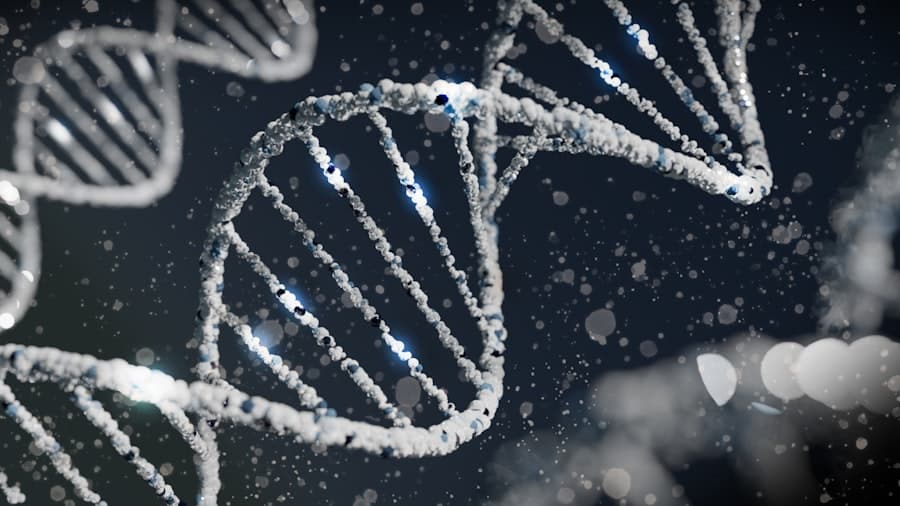CRISPR technology, an acronym for Clustered Regularly Interspaced Short Palindromic Repeats, has revolutionized the field of genetics since its discovery. Initially identified as a part of the immune system in bacteria, CRISPR has been adapted for use in gene editing, allowing scientists to make precise modifications to DNThis groundbreaking tool enables researchers to target specific genes, edit them, and even insert or delete genetic material with unprecedented accuracy. The implications of CRISPR technology extend far beyond basic research; it holds the potential to transform medicine, agriculture, and biotechnology.
The simplicity and efficiency of CRISPR have made it a preferred method for gene editing over traditional techniques. Unlike older methods that often required complex procedures and extensive resources, CRISPR can be implemented with relative ease. The technology relies on a guide RNA that directs the Cas9 enzyme to the desired location in the genome, where it creates a double-strand break.
This break can then be repaired by the cell’s natural repair mechanisms, allowing for the introduction of new genetic material or the correction of mutations. As a result, CRISPR has opened new avenues for understanding genetic functions and developing therapies for various diseases.
Key Takeaways
- CRISPR technology enables precise gene editing to target genetic disorders.
- It works by cutting and modifying specific DNA sequences within genes.
- Current applications include treating diseases like sickle cell anemia and cystic fibrosis.
- Ethical concerns and technical challenges remain significant in CRISPR therapy.
- Future prospects suggest CRISPR could revolutionize genetic medicine with more successful treatments.
Understanding Genetic Disorders
Genetic disorders arise from abnormalities in an individual’s DNA, which can be inherited or occur spontaneously. These disorders can manifest in various ways, affecting physical health, cognitive abilities, and overall quality of life. Some genetic disorders are caused by single-gene mutations, such as cystic fibrosis or sickle cell anemia, while others result from chromosomal abnormalities or complex interactions between multiple genes and environmental factors.
The prevalence of genetic disorders underscores the importance of understanding their underlying mechanisms and developing effective treatments. The impact of genetic disorders on individuals and families can be profound. For instance, conditions like Huntington’s disease not only affect the individual but also place emotional and financial burdens on families.
The complexity of genetic disorders often complicates diagnosis and treatment, as symptoms may vary widely among affected individuals. Advances in genetic research have provided insights into the molecular basis of these disorders, paving the way for targeted therapies. However, many genetic conditions remain challenging to treat due to their intricate nature and the limitations of current medical interventions.
How CRISPR Works in Gene Editing

CRISPR technology operates through a sophisticated mechanism that allows for precise gene editing. At its core, the system consists of two main components: the Cas9 enzyme and a guide RNA (gRNA). The gRNA is designed to match a specific sequence in the target DNA, guiding the Cas9 enzyme to that location.
Once there, Cas9 introduces a double-strand break in the DNA, which triggers the cell’s repair processes. This break can be repaired through two primary pathways: non-homologous end joining (NHEJ) or homology-directed repair (HDR). NHEJ is a quick repair mechanism that often results in insertions or deletions (indels) at the break site, potentially disrupting the function of the targeted gene.
In contrast, HDR allows for more precise edits by using a template DNA strand to guide the repair process. This capability enables researchers to not only knock out genes but also insert new genetic material or correct mutations associated with genetic disorders. The versatility of CRISPR has made it an invaluable tool in both basic research and therapeutic applications.
Current Applications of CRISPR in Treating Genetic Disorders
The applications of CRISPR technology in treating genetic disorders are rapidly expanding, with numerous studies demonstrating its potential efficacy. One notable area of focus is hematological disorders, such as sickle cell disease and beta-thalassemia. Researchers have successfully used CRISPR to edit hematopoietic stem cells from patients, correcting mutations responsible for these conditions.
In clinical trials, patients have shown significant improvements in symptoms and overall health following CRISPR-based therapies.
This severe genetic disorder is caused by mutations in the dystrophin gene, leading to progressive muscle degeneration.
By employing CRISPR to target and repair these mutations, scientists aim to restore dystrophin production in muscle cells. Early preclinical studies have shown encouraging results, with treated mice exhibiting improved muscle function and reduced pathology. These examples illustrate how CRISPR is not merely a theoretical concept but a practical tool with real-world implications for treating debilitating genetic disorders.
Challenges and Ethical Considerations in CRISPR Therapy
Despite its transformative potential, CRISPR technology is not without challenges and ethical dilemmas. One significant concern is off-target effects, where unintended edits occur at sites other than the intended target. These unintended modifications could lead to harmful consequences, including the activation of oncogenes or disruption of essential genes.
Researchers are actively working on improving the specificity of CRISPR systems to minimize these risks, but ensuring safety remains a critical hurdle before widespread clinical application. Ethical considerations also play a crucial role in discussions surrounding CRISPR therapy. The ability to edit human embryos raises profound questions about consent, potential misuse, and long-term societal implications.
The prospect of “designer babies,” where genetic traits could be selected based on parental preferences rather than medical necessity, poses ethical challenges that society must grapple with. Regulatory frameworks are still evolving to address these concerns while balancing innovation with responsible use of technology.
Future Prospects of CRISPR in Curing Genetic Disorders

The future prospects of CRISPR technology in curing genetic disorders are both exciting and complex. As research continues to advance, scientists are exploring novel applications beyond single-gene disorders. For instance, CRISPR could potentially be used to target polygenic diseases—conditions influenced by multiple genes—by simultaneously editing several genes involved in disease pathways.
This approach could lead to more comprehensive treatments for complex conditions such as diabetes or heart disease. Moreover, advancements in delivery methods for CRISPR components are crucial for enhancing therapeutic efficacy. Current methods often rely on viral vectors or lipid nanoparticles to deliver Cas9 and gRNA into target cells.
Researchers are investigating alternative delivery systems that could improve efficiency and reduce immune responses. As these technologies mature, they may facilitate broader applications of CRISPR in clinical settings, ultimately leading to more effective treatments for a wide range of genetic disorders.
Case Studies of Successful CRISPR Treatments
Several case studies highlight the successful application of CRISPR technology in treating genetic disorders, showcasing its transformative potential. One prominent example is the case of a patient with beta-thalassemia who underwent a clinical trial involving CRISPR-edited stem cells. The patient’s own hematopoietic stem cells were extracted and edited ex vivo to correct the mutation responsible for the disorder before being reintroduced into their body.
Remarkably, follow-up assessments revealed that the patient achieved normal hemoglobin levels and experienced a significant reduction in transfusion dependence. Another compelling case involves a patient with sickle cell disease who received a similar treatment approach using CRISPR technology. After editing their stem cells to correct the mutation causing sickle-shaped red blood cells, the patient demonstrated remarkable improvements in health markers and quality of life.
These case studies not only provide hope for individuals suffering from genetic disorders but also serve as proof-of-concept for the broader application of CRISPR-based therapies in clinical settings.
Conclusion and Implications for the Future of Genetic Medicine
The implications of CRISPR technology for the future of genetic medicine are profound and far-reaching. As researchers continue to refine this powerful tool and address its challenges, we stand on the brink of a new era in healthcare where genetic disorders may no longer be considered untreatable. The ability to edit genes with precision opens up possibilities for curing diseases that have long plagued humanity.
However, as we advance into this new frontier, it is essential to navigate the ethical landscape carefully and ensure that these technologies are used responsibly. The promise of CRISPR extends beyond mere treatment; it invites us to rethink our understanding of genetics and disease management altogether. As we harness this revolutionary technology, we must remain vigilant about its implications for society and strive to ensure equitable access to its benefits for all individuals affected by genetic disorders.
In the quest to understand the potential of CRISPR technology in curing genetic disorders, it is essential to explore various related fields and advancements. One such area is the impact of innovative technologies on education and research, which can be further examined in the article about the new world of possibilities with the Samsung Galaxy Chromebook 2 360. This article highlights how cutting-edge devices can enhance learning and research capabilities, ultimately contributing to breakthroughs in genetic research and therapies.
FAQs
What is CRISPR?
CRISPR stands for Clustered Regularly Interspaced Short Palindromic Repeats. It is a revolutionary gene-editing technology that allows scientists to precisely alter DNA sequences within organisms.
How does CRISPR work in curing genetic disorders?
CRISPR works by using a guide RNA to locate a specific DNA sequence in the genome. The Cas9 enzyme then cuts the DNA at this location, allowing for the removal, addition, or alteration of genetic material to correct mutations responsible for genetic disorders.
What types of genetic disorders can CRISPR potentially cure?
CRISPR has the potential to treat a wide range of genetic disorders, including cystic fibrosis, sickle cell anemia, muscular dystrophy, Huntington’s disease, and certain types of inherited blindness, among others.
Is CRISPR gene editing safe?
While CRISPR shows great promise, safety concerns remain, such as off-target effects where unintended parts of the genome may be edited. Ongoing research aims to improve precision and minimize risks before widespread clinical use.
Has CRISPR been used in human clinical trials?
Yes, CRISPR-based therapies have entered clinical trials for several genetic disorders, including sickle cell disease and beta-thalassemia, with some early results showing promising outcomes.
What ethical considerations are associated with using CRISPR to cure genetic disorders?
Ethical concerns include the potential for unintended consequences, germline editing (which affects future generations), equitable access to treatments, and the possibility of using the technology for non-therapeutic enhancements.
Can CRISPR be used to edit genes in embryos?
Technically, yes. However, editing human embryos raises significant ethical and regulatory issues. Many countries have strict guidelines or bans on germline editing due to the potential long-term impacts.
How soon could CRISPR-based cures become widely available?
While some CRISPR therapies are in clinical trials, widespread availability depends on successful trial outcomes, regulatory approvals, and manufacturing capabilities. It may take several years before these treatments become common.
What are the main challenges in using CRISPR for curing genetic disorders?
Challenges include ensuring precise targeting to avoid off-target effects, delivering the CRISPR components efficiently into the right cells, managing immune responses, and addressing ethical and regulatory concerns.
Where can I learn more about CRISPR and its applications?
Reliable sources include scientific journals, educational websites like the National Institutes of Health (NIH), the Broad Institute, and reputable news outlets covering biotechnology and genetics.

